Archive for ‘Task Management’ Category
Take a Break — How Breaks Improve Health and Productivity
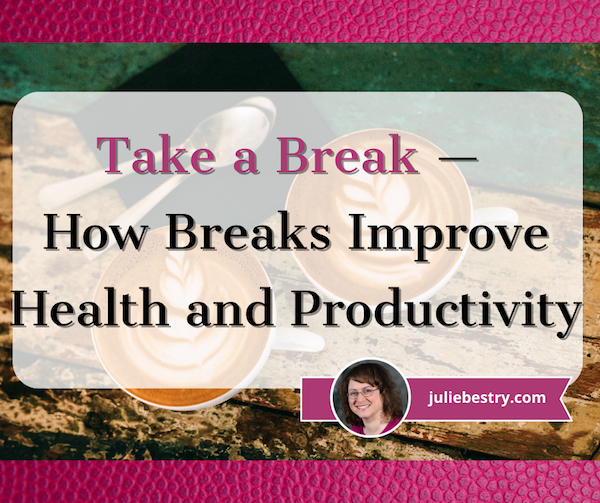
If I asked what the single best thing you could do to improve your productivity was, what would you say? Would it be doing a brain dump of your tasks? Prioritizing what you need to do? Making a list? Avoiding multi-tasking? Eliminating interruptions?
What would you think if I told you that the best way to get the most out of everything you are doing is to stop doing it for a little while?
I know, it may sound counterintuitive, but taking a break instead of spending your day trying to power through is exactly what’s needed for your body, your brain, and your spirit, not to mention the actual work.
It may sound counterintuitive, but taking a break instead of spending your day trying to power through is exactly what's needed for your body, your brain, and your spirit, not to mention the actual work. Click To TweetLet us not forget the trouble Alexander Hamilton found himself in when he failed to take a break. First, Eliza begged him to step away from his efforts to create a national banking system and pay attention to his son’s performance. (It’s a pity Lin-Manuel Miranda didn’t insert a verse from Cat’s In the Cradle!) Then his wife and sister-in-law begged him to “take a break,” and join them at their father’s place in upstate New York instead of struggling on in New York City.
(And, as fans of history and/or the musical Hamilton know, the failure to take a break from single-mindedly focusing on defeating Jefferson, et. al., and controlling the American economic future led, at least in part, to Hamilton making a poor personal decision (regarding Maria Reynolds), which led to others thinking he’d made a poor ethical and professional decision, which led to Hamilton blowing up his personal and professional lives. The whole second act is a testimonial for the vital importance of taking a break!)
But we don’t have to interpret musicals to know that taking breaks from our work or studying is essential for happy, productive lives. In “Give me a break!” A systematic review and meta-analysis on the efficacy of micro-breaks for increasing well-being and performance, researchers analyzed the results of 22 independent studies on the efficacy of work breaks for “enhancing well-being (vigor and fatigue) and performance.” They found that breaks were essential for replenishing mental and physical energy after work-related depletion, and that the more depleting a task is, the longer a duration of break is needed.
And if neither musical arts nor academic research is enough to convince you, how about the effect, not only on workers, but on work? Eight years ago, an NPR piece, We’re Not Taking Enough Lunch Breaks. Why That’s Bad For Business, noted that only one in five people were stepping out of the office at lunchtime. The point wasn’t eating at work, but not stepping away from work. As we’ll see, that undermines our bodies, our minds, and the quality of the work we perform.
WHAT COUNTS AS A BREAK?
A break can be of varying durations for varying activities. How long does a break need to be to have a positive effect? That depends on the work you’re doing, how much energy it depletes, and the kind of break you’re taking.
How to Take Better Breaks at Work, According to Research from the Harvard Business Review, notes that shorter breaks can be effective but that the timing of breaks is also vital. For example, because fatigue intensifies as the day goes on, short (or at least shorter) breaks are more effective in the morning, but by late afternoon, longer breaks are necessary to yield positive results.
So, what length breaks should we consider?
20–20–20 Rule
This rule simply instructs that every twenty minutes of screen time, look away from the screen and focus on something at least twenty feet away for at least twenty seconds.
The 20–20–20 Rule is designed to prevent computer vision syndrome, particularly digitally-induced eye strain. Taking a break like this can also help reduce blurred vision, headaches, dry eyes, and neck and shoulder pain.
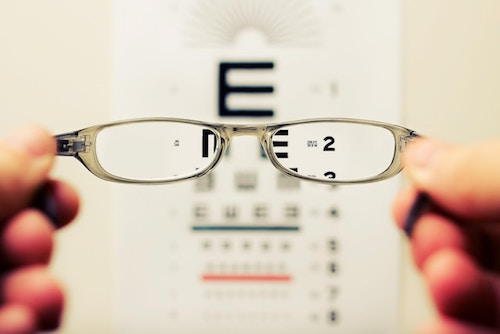
Eye Chart Photo by David Travis on Unsplash
Regular screen breaks of just one-third of a minute will give your baby blues (or browns or greens) much-needed rest, but maybe more. When something (like a phone alarm or alert on your screen telling you, “Look away! Look away!”) prompts you to take this momentary break for your vision, you’re likely to adjust more than your eyesight.
When you’ve been in flow, focused intently on what you’re reading on the screen, you’ve probably failed to pay attention to your posture (so you maybe slumped forward toward your screen) and your breathing. This super-quick break shakes everything loose.
Short Breaks
A short break would be anything that takes less than 5 or ten minutes. Consider the break you might take when doing a series of Pomodoros, where you work for 25 minutes, then step away from the task at hand — and step away from your desk — to stretch, spend a few minutes on a puzzle, or play with your puppy.
Moderate Breaks
These are the kind we’ll be looking at in great detail over this post and the next one. There’s quite a bit of cross-over between the breaks that primarily help reset the body vs. the brain, but in broad strokes, these categories might include:
Breaks primarily for the body
- Meal and snack breaks — Working through lunch is so bad for your physical and mental health that France outlawed eating at your desk all the way back in 1894! It’s called la pause déjeuner, and granted, it was for hygienic reasons, but now it’s recognized as good mental hygiene to step away to eat lunch mid-day and onboard some healthy(ish) snacks to energize the body, concentration, and focus.
- Nap breaks — Sure, not everyone is physically (or socially) able to take a power nap, but these mini-sleepytimes can pump up our energy and improve our ability to concentrate. In the US, this is more likely to be your jam if you work from home, unless your company has invested in nap pods, but there are many cultures where a nap break is considered part of the work day.
- Walk breaks — Personally, nothing allows me to refresh my brain as well as getting my 10,000+ steps. While the prescription for 10K steps was made up by a Japanese pedometer company (and your personal peak number of steps depends on age and health), there’s something magical about pounding the pavement (or the lawn or the forest). Each successive step seems to clear mental fog; if I take a walk break when I’m facing a work problem (like how to tackle a blog post), the solution comes to me by the time my walk break is over.
- Dance breaks — Pump up the jam! The advent of personal surround-sound means you can listen to music without Lloyd Dobbler standing outside your bedroom, hoisting a boom box playing “In Your Eyes” over his head. If you work alone, blast your tunes; otherwise, put on those Beats or Airpods, and play on your favorite song to make your own music video.
Find a conference room or classroom where nobody’s likely to disturb you, or head out behind the building, and shake your groove thang! Consider these suggestions for finding your go-do dance-along video:
Breaks primarily for the brain
- Meditation and mindfulness breaks — An entire industry has popped up for helping people take breaks to be mindful and/or meditate. Some popular free apps include:
- Insight Timer
- UCLA Mindful
- Healthy Minds Program
- Smiling Mind
- Mindfulness Coach (developed by the US Department of Veteran’s Affairs to help combat PTSD)
Additionally, there are a variety of guided meditations on YouTube. For example:
Whether you aim for more formal guided meditations or gentle mindfulness activities like deep breathing, you’ll find that this kind of break can reduce your stress when you feel like you’re constantly tumbling <bleep>-over-teakettle.
- Nature breaks — I’m probably the last person to think about communing with nature. I hate wind and rain and bugs and heat and the sound of frogs and crickets. I am generally an in-of-doors girl. But the Japanese practice of “forest bathing” (Shinrin-yoku) has been found to reduce blood pressure, alleviate depression, improve mental health, boost immune function, and more. Beyond that, getting away from your computer and focusing your eyeballs (and the rest of your sensory receptors) on something other than work will recharge the body and the brain, making the return to work more inviting.
And even I can find ways to enjoy nature! This past weekend, my friend and colleague Sara Skillen and I drove from our respective cities to meet at Sewanee — University of the South for lunch and a bit of a meander.
I love exploring college campus architecture, and we were both excited to walk the labyrinth in Abbo’s Alley, acres of campus with forest/woods, streams, stone bridges, a butterfly garden, gazebo, and other goodies.
We spent over an hour in search of the labyrinth (not even shown in the calming video, above), ambling (and occasionally tripping) over tree roots and wobbly rocks. However, the combination of Sara’s stellar company, perfect temperatures, and the lack of bugs made our jaunt an ideal break from the typical workweek.
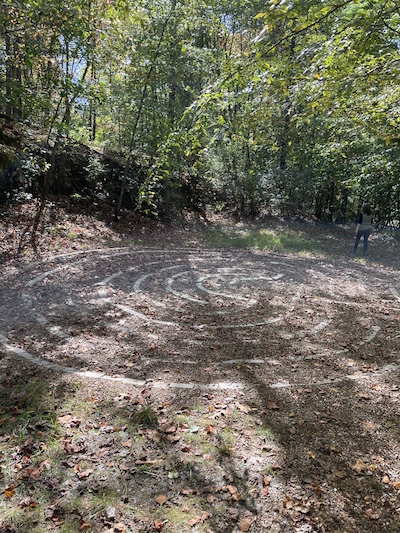
The intriguing thing is that taking a break to “touch grass” works even if you’re not walking or otherwise moving around enough to pump your blood; just sitting outside, even if your “outside” isn’t at all what most people would think of as “nature,” can still have a calming effect.
- Creativity breaks — Even if your workday involves creating, a creativity break can blow that layer of dust off of your mental capacity. You can’t usually step away from work to spend half a day creating, but you can blend your lunch break with some time for painting, drawing, playing a musical instrument, or journaling (by hand, if possible).
- Appreciation breaks — Not every break requires producing something. Sometimes, when your brain is full of one thing, the solution is to fill it with something else, particularly something serene or delightful. Consider taking your lunch break at a nearby museum or art gallery, or just watch tiny humans playing in the park. Appreciate the elegance of ducks swimming on a pond or enjoy the colors and sounds of an open air market.
- Social breaks — While reading social media has downsides, being social does not. I’m an extrovert, and there’s nothing that pumps me up more than taking a break to socialize. Of course, if you’re an introvert, you may not want to wade into loud, involved conversations with colleagues (or, heaven-forbid, strangers), because it may drain you of the mental energy you’re aiming to refresh.
Whatever kind of break you take from daily work, select types of activities that will use different aspects of your brain than you were using to write reports, design web sites, study economics, etc. This allows the “part” of the brain that was overworked to rest and re-set.
Full-Length Breaks: Vacations
I could (and probably should) write a post about the mental, physical, and productivity benefits for taking a long break, whether that’s a real weekend without looking at email or a two-week immersive vacation. Of course, not everyone gets paid vacation, but vacation-length breaks are essential to our health and vigor, which in turn, keep us productive, whether that means making the widgets to building society by raising a family (or, as is often the case, both).
THE BENEFITS OF TAKING A BREAK
When we take breaks throughout the workday, we reap the benefits of better overall physical and mental health, enhanced cognitive function, and improved job performance, all of which will improve our productivity. Let’s look at some of the key advantages of incorporating regular breaks in your work routine.
Enhanced Physical Health
When we incorporate any breaks in our day that involve physical activity or movement, whether it’s stretching, walking, or exercise, it contributes to improved physical health. We improve the blood circulation throughout our bodies (including to our brains!) while reducing the muscle tension that leads to headaches, body strain, and repetitive stress disorders like carpal tunnel syndrome.
We also prevent the various negative health effects of prolonged sedentary behavior. I’m sure you’ve heard the expression, “Sitting is the new smoking.” As I explained in Paper Doll on The Truth(s) About Standing Desks, it’s not that standing desks are that much better. Sitting is bad because when you sit all day, your telomeres (the tiny caps on the ends of DNA strands) get shorter, and the rate at which the body ages and decays speeds up. However, standing all day (like at a standing desk) isn’t necessary all that much better. What is important is movement, and you generally have to take a break from work to get moving!
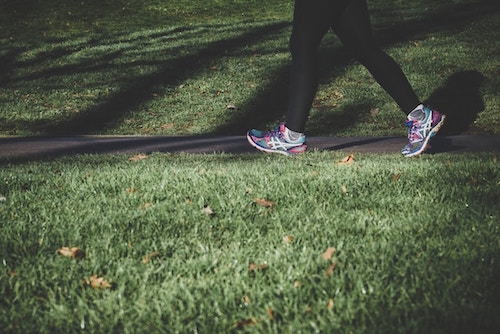
Walking Photo by Arek Adeoye on Unsplash
Stress Reduction
Varying reports note that workplace-related stress affects up to 80% of American workers. That’s estimated to cost anywhere from $150 billion to $300 billion. That economy-busting stress isn’t going to disappear if we add a few extra breaks each day for mental clarity, but we can turn this around on a personal level.
Breaks in our workday give us the opportunity to reduce stress levels and alleviate the pressure of constantly being focused on work (and the related external expectations place on us). When we engage in any kind of activity that promotes relaxation, we can lower blood pressure (which is good for both the body and the psyche), improve mood, and enhance a sense of well-being.
When we think about stress-reduction activities, we often focus on time-intensive tasks, like a yoga class or long hike, but short-term activities like mindfulness exercises, deep breathing, and brief walks (around the building or around the block) can have similar mental health benefits for reducing stress.
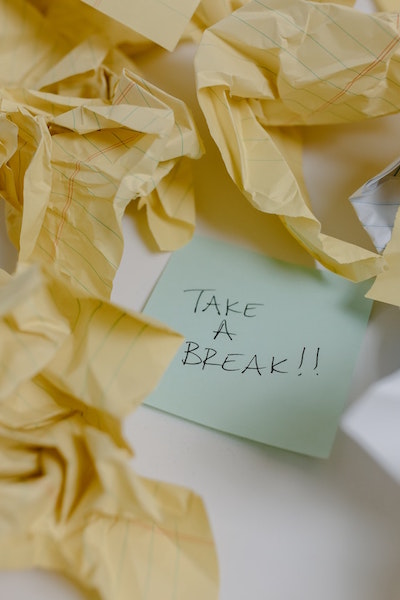
Take a Break Photo by Tara Winstead
Increased Energy and Motivation
When we take breaks throughout the workday, the physical and mental health benefits described above will have a domino effect, knocking down (and out) other problems.
When we take stop what we’re working on to eat, nap, socialize, exercise, or just remove ourselves from hyper-focus on our work, we replenish our energy, both our physical capacity (with improved blood pressure and balanced blood glucose levels) but also our mental capacity.
Conversely, if we don’t take breaks, we’re more likely to suffer from burnout. A 2022 study from Aflac found that 59% of workers were experiencing burnout, and 86% of those reported experiencing anxiety, depression, and sleep difficulties in the prior year, so this is not a negligible concern.
Setting aside time for physical movement, relaxation, and self-care boosts our sense of well-being, which tops off our enthusiasm, and in turn, that improved motivation boosts our ability to perform and sustain our productivity. Whoohoo!
Improved Focus, Memory, Concentration
Contrary to our assumptions that we should always power through our work, our brains need novelty. Researchers at the University of Illinois found that the longer we focus on something, the more likely the occurrence of a “vigilance decrement,” where our “attentional resources” start to plummet. It’s like how we are aware of how cold the ocean is when we jump in, but the longer we’re exposed, the more we get used to it. Or, to use a clichéd metaphor, we’re the frog in the boiling water.
Our brains respond to change, and the longer we go without change, the less efficient they are. Breaks don’t just rev us up; they help prevent the mental fatigue that sets in when we’ve tried to work too hard or too long. When we get lost in those mid-afternoon cobwebs, a break can enhance concentration, allowing the brain to rest and recharge.
Periods of mental rest, whether through mindfulness, activity, or sleep have the power to help us consolidate our memories and improve learning. And this is all as true for kids as for adults!
Short break periods jazz our bodies. We might imagine that a vigorous walk or dancing around to Taylor Swift would pump too much blood to our brains, making it hard to focus, but the opposite is true. Relaxation, whether it’s arrived at through calming activities like meditation or energizing ones like physical activity, will boost cognitive resources. In turn, it enables people to improve and maintain attention, allowing more effective and efficient focus on the work at hand!
Prevention of Decision Fatigue
Decision fatigue occurs when we are faced with too many overwhelming choices without adequate rest, whether for our bodies or our brains. However, breaks can play a crucial role in preventing decision fatigue; just a short pause for the right kind of physical or mental stimulation and/or relaxation can reset cognitive resources.
When we have decision fatigue, we may make poor choices, or procrastinate on making any choices at all. Breaks can give us the resilience to make better decisions and maintain a higher level of productivity, using those decisions to move our projects forward.
Enhanced Creativity and Problem-Solving
We all know what it feels like when our brains get stale. We cease coming up with fresh takes (or even fresh words), which turns into a vicious cycle. If we’re not feeling creative and can’t solve our problems, we’re going to feel bored, unenthusiastic, and stressed out!
Taking breaks fosters divergent thinking and spikes creativity, so we can approach tasks from fresh perspectives. Just stepping away from work for a short time — and focusing on the right energy-boosting replacement tasks — can stimulate more innovative ideas and solutions, improving our problem-solving skills and pumping up our creative mojo.
Per the NPR piece I quoted earlier, Kimberly Elsbach (a Professor Emerita Fellow, Academy of Management University at the California Davis Graduate School of Management), an expert in workplace psychology, noted that never leaving your office or your desk is “…really detrimental to creative thinking. It’s also detrimental to doing that rumination that’s needed for ideas to percolate and gestate and allow a person to arrive at an ‘aha’ moment.” Aha, indeed!
It’s essential to recognize the positive impact of breaks on physical, mental, and emotional well-being so that we can remember to prioritize these pauses and integrate them into our daily work routines. This is key to us fostering balanced, productive approaches to taking on our responsibilities.
Not all breaks are created equal
Pausing work to scroll through social media won’t have the same benefits as the kinds of breaks discussed earlier in this post. First, everything from the death-grip on our phones to the poor posture of arching necks over screens to the blue light of cell phones is bad for physical health; plus, you’re likely to remain just as stationary as when you were working! Beyond that, social media rarely reflects the kind of psychologically neutral or uplifting content that boosts mood or cognition.
Similarly, smoke breaks aren’t good breaks. While they may yield some social benefit, data on smoking’s physical devastation on the body and brain is clear. Moreover, research finds that smokers have thinner cerebral cortex than non-smokers. (The cerebral cortex is essential for learning and memory, so thicker tissue is better.) Smoking reduces the ability to learn and remember, key requirements for productivity!
TAKE A READING BREAK
For further reading on the importance of breaks for health and productivity, you may wish to read:
Breaks During the Workday (Michigan State University)
Give Us a Break (Compass Group)
How to Take Better Breaks at Work, According to Research (Harvard Business Review)
BETTER BREAKS AROUND THE WORLD
In full disclosure, this post started out as a look at how other cultures embrace taking breaks as part of coping with excessive workloads. Instead, this is the prequel, a what-and-why for improving your vitality and productivity with breaks. Next week’s follow-up post, Take a Break for Productivity: the International Perspective is where the real fun will be, as we look at fun and tasty examples of “take a break” culture around the world.
Spoilers: the Swedes take the cake (figuratively and literally) and first place when it comes to taking breaks!
Use the Rule of 3 to Improve Your Productivity
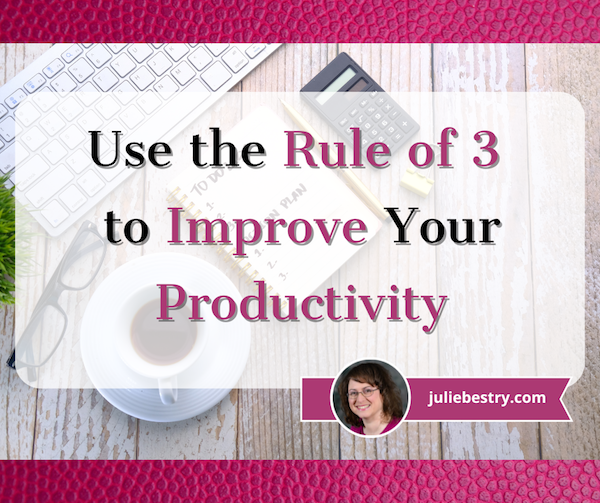
It’s Monday — the first Monday of a new month, of a new quarter, and the last quarter of the year. It may suddenly feel like a lot is riding on getting things crossed of your list so you can make those dreams come true before 2023 is in the rear-view mirror.
RECAPPING THE ESSENTIALS OF TACKLING YOUR TO-DO LIST
Back in May, in Frogs, Tomatoes, and Bees: Time Techniques to Get Things Done, we looked at a spate of productivity concepts for breaking down the hours of your (preferably time-blocked) day to effectively use your discretionary time (that is, the part of your schedule not determined by your boss, school, or firmly-scheduled obligations). We started with the essential elements of accomplishing things:
Knowing what to do — This involves a brain dump to capture every potential task stuck in your head, adding to it from everything in your various in-boxes and buckets (GTD-style), and creating a master list, whether that’s pen-on-paper or a task app.
Knowing what to do first — Prioritizing tasks involves a complex intersection of what is important and urgent. We shorthanded the process with the Eisenhower Matrix (which, as explained in Paper Doll Shares Presidential Wisdom on Productivity, wasn’t invented by the Ike we like, but was attributed to him due to a speech he gave and was made more famous by Stephen Covey).
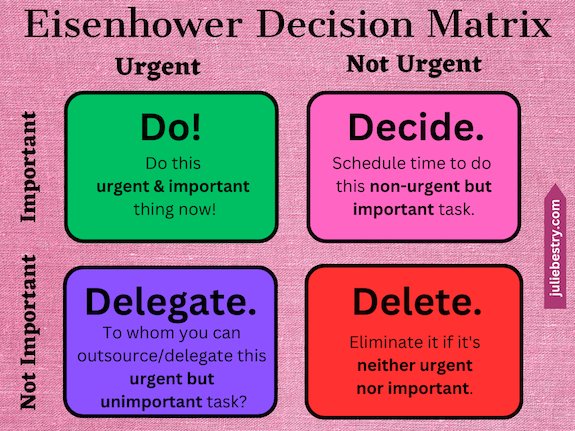
The Eisenhower Matrix gives you the opportunity to (literally or just figuratively) graph each task from your massive brain-dumped list to identify where it falls along a continuum of importance and urgency. From January through mid-April, filing your taxes is important, but it only becomes more urgent as St. Patrick’s Day is behind you and April 15th draws nearer.
Conversely, this Friday’s registration date for an adult education class on French cooking has what appears to be an urgent task; however, if learning how to make Julia Child’s famed Boeuf Bourguignon isn’t that compelling and you were only doing it to please your mother-in-law, it may fall low on the importance scale.
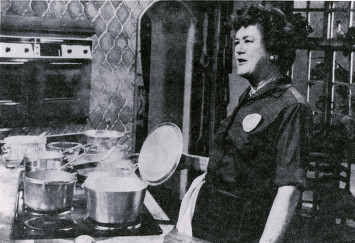 Julia Child on KUHT/By KUHT via wikimedia commons
Julia Child on KUHT/By KUHT via wikimedia commons
A big part of identifying the value of a task may involve looking at what your motivation is. You perform extrinsically-motivated behaviors in order to receive some external reward (or to avoid an external punishment). You might work at a job for a paycheck, work hard in a class to get the grades that allow you to get a scholarship, or make that Boeuf Bourguignon to keep the peace between family members (because it’s hard for people to snipe when their mouths are full).
Intrinsically-motivated behaviors are those that you do because they fulfill you personally. These include passion projects like volunteering, participating in hobbies and sports, or even simultaneously compelling but challenging life activities, like parenting.
Sometimes, you may find yourself frustrated that the very things you value for your sanity-preserving self-care are less valued by society. (This is largely because, as we discussed in our series on toxic productivity, late-stage capitalism values producing work that yields revenue, generally for the people above you in the hierarchy. Sigh.)
Of course, the ideal is to find opportunities for extrinsically- and intrinsically-motivating behaviors to dovetail. When that happens, the things that are important are easier to accomplish because they give you personal fulfillment and extrinsic rewards.
Making something a high priority, per se, doesn’t ensure that you’ll do it, but if that task is important, not just for keeping you out of debtor’s prison but also making your heart sing, you’ll do it less begrudgingly, and if it’s urgent, you’ll find you’re less likely to procrastinate.
You’re probably not going to find that your love of the game will allow you to become a professional pickleball player — more power to you if you do! — but you may find that by becoming more efficient and effective at your for-a-paycheck job will yield more free time to pursue a passion that could turn into a new livelihood.
Once you gauge your each task’s relative importance and urgency, you can move forward to knowing what to get done today (vs. delaying to later in the week), what you might delegate, and what you can hang it in the maybe/someday closet.
Do it! — The final piece of the puzzle involves making time to do what you’ve decided to accomplish.
MANAGING OUR DAYS BY MANAGING OUR HOURS
Back in that post I referenced, Frogs, Tomatoes, and Bees: Time Techniques to Get Things Done, I reviewed well-known and lesser techniques for hunkering down and getting tasks done. I encourage you to read the prior post for details of the methods you find less familiar, but in general, the post reviewed:

Pomodoro Timer by Michael Mayer CC By 2.0 Deed
- The Pomodoro Technique — At its most basic, the process involves identifying a task to work on now, setting a timer for 25 minutes, focusing on that task for 25 minutes without interruption, and taking a short break. Proponents believe it short-circuits procrastination but detractors note that it prevents getting into a flow state.
- Tocks — This variation on the Pomodoro Technique involves working 45 minutes rather than 25, and adds the step of taking note of distractions as they arise for later analysis.
- The 90-Minute Focus Block — Here, the work blocks expand to 90 minutes and the breaks extend to 20. The expanded time frame is based on research in neurobiology and how our brains use potassium and sodium ions to conduct electrical signals indicates a biological component to our ability to effectively focus.
- 52/17 Method — Splitting the difference between the traditional Pomodoro and the 90-Minute Focus Block, this accents 52-minute sprints of dedicated and intense work followed by mentally-refreshing breaks. It’s backed by behavioral analysis rather than neurobiology.
- The Flowtime Technique — This method starts like all of the others, with uninterrupted work sessions, but instead of ceasing at the behest of an alarm or other external force, you work until you start to feel distracted or mentally or physically fatigued. While this method involves a lot of administrative work for logging both distractions and statistics regarding work patterns, it’s probably the most ideal for creative endeavors, as you ignore the clock and embrace the flow.
These methods work in concert with the principles we’ve discussed regarding time blocking, particularly from these two posts:
Highlights from the 2023 Task Management & Time Blocking Summit
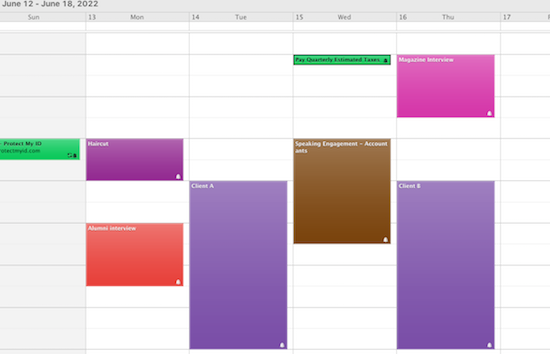
Putting it all together, you figure out what you need to do (overall), identify your priorities, and block your time to ensure ample space in your schedule for accomplishing tasks. Then you get to it!
USE THE RULE OF 3 TO KEEP LIFE FROM GETTING IN THE WAY
All of the above is great for once you get your butt in the chair and have identified a specific task, but let’s face it, getting to that point? It’s a lot.
If you work in an environment where most of your daily schedule can be firmly set in stone (or bytes) with very little to distract you, you’re lucky. But most people experience a multitude of interruptions from co-workers and bosses and tiny humans and senior parents (whether they have physical challenges or just need tech support). Others are dealing with mental and physical health crises and have limited spoons (that is, energy and capacity) to get through the day, let alone accomplish prioritized tasks.
If you’re feeling overwhelmed, there’s a productivity principle that can help you get a foothold when things feel like their going off the rails.
It’s called the Rule of 3.
At its most basic, the Rule of 3 asks you to apply your focused attention, intentionally, to three goals or main tasks for a specific time frame. Generally, and the way we’re going to examine it, that time frame is a day, but you could apply it to a week (or a four-day conference, or a working weekend) or whatever period of time you need.
The key is that you are concentrating on a small number of crucial tasks to maximize your focus, your effectiveness, and your overall productivity. The steps are simple:
Identify three key tasks.
When you plan your day, identify the three most important goals or tasks that you want to accomplish. These may all be work tasks, or they could be a combination: one key work task, one goal item for your family, and one for self-care.
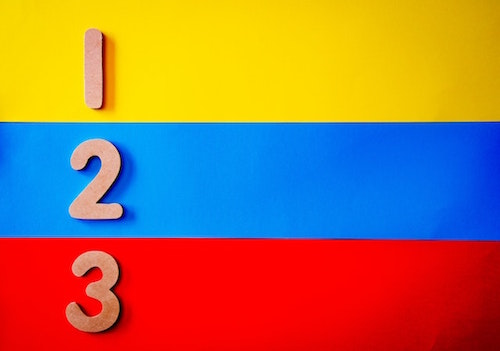
These three should be whatever you think will have the most significant impact on your personal projects, your work projects, or whatever matters the most to you.
And obviously these aren’t the only three things you’re going to get done in a day. You’re not going to skip processing email or picking your kid up from Drama Club or brushing your teeth. We ALL do more than three things in the day. But the Rule of 3 says:
Whatever else I’m doing today, I am absolutely focusing my time and attention to
GET THESE THREE GLORIOUS TASKS COMPLETED!
We’ve already talked at length about the value of the Eisenhower Matrix in prioritizing, and that’s a great place to start, but there are other concepts to help you pick your three key tasks.
Parkinson’s Law states that work expands to fill the time available for its completion. We’ve all had days where we fiddled around and didn’t start working on “the thing” until just about the time we knew we had to being in order to finish on time.
But imagine not doing that. Imagine getting the thing done. And then the next thing. And one more. Imagine not taking all the time available and just taking the time necessary.
Limiting yourself to three tasks creates a sense of urgency. If you recognize that to honor your obligation to yourself, you will focus on achieving the three key tasks, you cut procrastination off at the pass. No fiddling.
Next, experts in cognitive psychology have found that we generally have limited attention and cognitive resources. We get tired. We get bored. We get distracted. We get antsy. We get hangry. By narrowing your focus to a small number of tasks, you are able allocate your attention and mental energy more effectively, which aligns with the Rule of 3’s idea of prioritization.
Finally, Hick’s Law is a psychological principle that says that the time it takes to make a decision increases with the number and complexity of choices. Once you limit your choices for the day to just three key tasks, you are reducing the signal-to-noise ratio and the decision-making complexity. The less you must think about doing, the more you can focus on the task at hand. (And remember, you can always do more of your important (and urgent) things once you’ve done your big three!)
Commit to each of the three priorities and focus.
OK, yes, you still have three things, and you’ll have to decide which of these to do first, and second, and third. You’ll have to figure out into which time block you’ll slot each item. And then you’ll have to blur out two of them while you focus on a third.
In theory, the Rule of 3 calls on you to focus your energy and attention on completing these tasks before moving on to less critical or lower-priority activities. And obviously it discourages multitasking and giving into distractions while working toward finishing the key goals. You can use any of the focused work-session techniques listed up above once you sit down to focus on the task, but before you can focus on the tasks, you have to commit to them, to the idea that you WILL do these three key tasks today.
OK, let’s step back.
Paper Doll recognizes the need for a reality check. You will not always be able to tackle all three key tasks first before getting on with your day unless your efforts do not require the involvement of other human beings (whether tiny humans or large egos).
For example, last Friday, my car was finally ready for pickup. It’s been a long two months since it was stolen, recovered, and had to go through many, many repairs. (For reference, Organize to Prevent (or Recover From) a Car Theft tells the initial tale; everything since has been a nightmare of dropped balls, global supply chain failures, and random poopyheads.) But I also wanted to get my flu shot and had two essential financial tasks.
The car issue was actually a series of interlocking tasks. I had to confirm the specifics with the body shop, and wanted to view and approve all the work before paying my deductible and returning the rental car, which involved more phone calls and scheduling, and I needed to approve the last round of digital insurance payments.
The car goal was both important and urgent, as I didn’t want to be charged for further days of the rental car, and frankly, I missed my adorable red Kia Soul as if it were a child away at summer camp for far too long. But while most of the car’s mechanical and body work were completed, there were a few painting-related flaws, and a review of the final no-longer-estimated estimate yielded lots of new questions. However, by staying single-minded on the task and not being distracted by calls, texts, and emails, it eventually got done, and I felt an immense sense of relief and completing this key task for my day.

Getting my flu shot involved confirming that my pharmacy had the flu vaccine and that no appointment was necessary. (Last year, appointments were required and only given on certain days of the week, which often conflicted with my client schedule.) And the bank tasks, though easy, were dependent in part on the arrival of the mail, and the fill-in postal carrier did not deliver the mail until close to 6 p.m.
Celebrate your wins!
Being successful with the Rule of 3 means acknowledging completion of the task and feeling satisfaction. Far too often, we rush through what we must do without celebrating that we’ve actually done it. However, taking the time to celebrate wins improves your confidence, boosts your motivation, and will make it easier to approach other tasks (especially long-avoided ones) with verve.
For a sense of psychological benefit of this step in completing key tasks (particularly those we might define as “adulting,”) I direct you to Hazel Thornton’s recent post, High Five Friday. She explores turning this celebration of completion of key tasks from a solitary act into a social one, and as I’ve watched people follow Hazel’s lead, the evident delight people experience is palpable!
Re-evaluate, or Lather/Rinse/Repeat: The “What’s Next?” Step.
OK, so you figured out what to do, did it, and gave yourself an atta-girl or atta-boy. Now review the process. Evaluate your progress to determine the big question: what’s next?
(Fans of The West Wing recognize the power of those two words. Lin-Manuel Miranda created this video for the late, great The West Wing Weekly podcast. There are two profanities within (at :50 and 1:04), so please be forewarned.)
This is the time to evaluate your progress (and your process for getting there). Determine the next three most important tasks to focus on, whether that’s for the remainder of today, or for tomorrow, or your next key time period.
You’re creating a continuing cycle of identifying key tasks, prioritizing them, completing them, doing a happy dance and high-fiving yourself, and reevaluating what worked and what didn’t. All of this is designed to help you maintain a higher level of the good, non-toxic kind of productivity that keeps you aligned with your ultimate goals.
Why does the Rule of 3 work?
First, it’s simple, so you may actually try it. Everyone loves a new productivity technique, but the more working parts, the less likely you will be to do more than think about using it.
Second, three is a magic number.
Whether it’s “lions and tigers and bears” or “faith, hope, and charity” or if you’ve been hearing a lot about the Roman Empire lately, “friends, Romans, countrymen.” It’s easy to keep three daily priorities in your head, so if you check in with yourself at lunchtime or mid-afternoon to see how you’re doing on your goals, you can mentally measure your progress in seconds.
Finally, and most importantly, the Rule of 3 is an effective approach because it prevents the overwhelm and decision fatigue that often results from having a long, fiddly, and overwhelming to-do list.
The Rule of 3 is an effective approach because it prevents the overwhelm and decision fatigue that often results from having a long, fiddly, and overwhelming to-do list. Click To TweetNarrowing your focus to just three tasks sets you up to more efficiently allocate your time and energy, so you can accomplish more meaningful things. Again, this may be work, but could be personal enrichment or self-care. Completing a project for work may be important, but exercising and having essential medical appointments and living a fulfilled life are of inestimable importance and urgency. In other words, you matter. Paper Doll says so!
ADAPT THE RULE OF 3 TO YOUR NEEDS
As with any productivity concept, the Rule of 3 is a only guideline. There is no “boss” of the Rule of 3 in the same way that practitioners of GTD look to David Allen; indeed, I’ve done extensive research and have yet to find an originator. I originally read about the Rule of 3 almost ten years ago in Chris Bailey‘s The Productivity Project: Accomplishing More by Managing Your Time, Attention, and Energy.
Organize Your Summer So It Doesn’t Disappear So Quickly
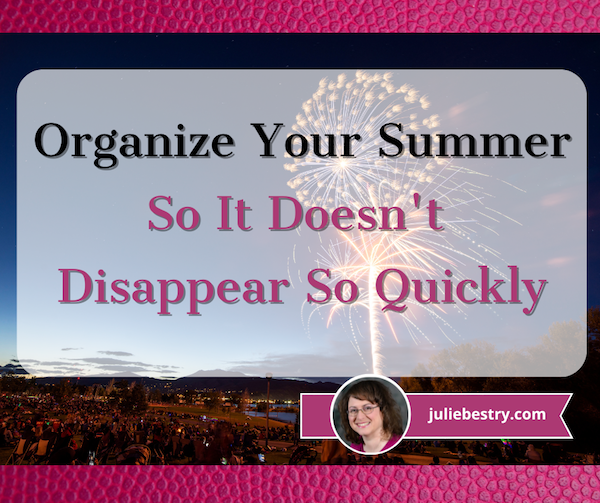
When I was a child, each July 4th as the music in the bandshell would stop and we’d pack up our chairs and blankets to the post-fireworks hubbub of people making their way to their cars, my father would always say the same thing.
As Independence Day would ebb away, he’d say, “Well, it’s the 4th of July. Summer’s over.”
And this would always annoy Paper Mommy.
It didn’t make sense. In New York State where we lived, school had usually only let out about two weeks earlier. Summer didn’t even officially begin of June 21st, and wouldn’t end until the third week of September. How could summer be over?
As an adult (and likely to Paper Mommy‘s dismay), I understand what my father was getting at. We all struggle through dark, dismal winters of our lives (literally and figuratively), holding out for the bright energy of the summer. I contend that it’s not spring we ever really eagerly anticipate. Springtime is rainy and windy; it contains the misery of April 15th and paying taxes, and after all, as T. S. Eliot said, April is the cruelest month.
But as May is ushered in, we finally get warm weather. Early graduations, while signaling the end of schooling, also bring new beginnings. And though the holiday is meant to pay tribute to those who died in service of protecting our nation and democracy, Memorial Day is nonetheless the marker we all use to signal the first real refresh of our lives and plans since New Year’s Day.
January 1st puts us on notice (or has us put the world on notice) that we have the power to make changes in who we are. Of course, we experience these changes every day, and don’t need holidays or permission to make ourselves new, as I wrote in Organizing A Fresh Start: Catalysts for Success.
And remaking ourselves and renewing our outlooks doesn’t have to take the shape of a resolution, as I’ve shared for many years, most recently in Review & Renew for 2022: Resolutions, Goals, and Words of the Year.
That said, we’re five full months into the year, and we may not have accomplished what we’d hoped. June is still a few days away, but if we’re not careful, if we’re not intentional, July 4th will be here in the blink of an eye. The week after the July 4th holiday is usually spent recovering from either revelry or obligatory travel to relatives. The heat of the summer builds up and our motivation wears down, and then suddenly it’s August.
For European friends and colleagues, life comes to a stop in August and entire nations turn their backs on toxic productivity and go on holiday. On this side of the Atlantic, we trudge on, working on what we must and shocked at the brevity of weekends when there’s fun to be had at barbecues and pool parties. And then there’s a shocking moment when someone asks what we’re doing for the holiday and Labor Day is one flip-of-the-calendar away!
To Paper Mommy‘s chagrin, my father was right. By the time the smoky scent of the fireworks retreats on July 4th, it’ll be a merely blink, two at most, and summer will be over.

But it doesn’t HAVE to be that way. We can take our summer back. We have 98 days from Memorial Day to Labor Day. What if we make a pact to make some of our plans, perhaps even actual dreams, come true?
UNDERSTAND WHY THE SUMMER DISAPPEARS SO QUICKLY
Way back in March 2020, in Does Anybody Really Know What Time It Is? 5 Strategies to Cope With Pandemic Time Dilation, I talked about how the oddness of the COVID lockdown made us lose track of time. I compared it to how in the first few days of a vacation, we’re hyper-aware of the strange stillness of not abiding by our usual and strict minute-by-minute schedules. But by a while into the vacation, we let our guards down and allow ourselves to drift off into the seductive haziness of having too few obligations.
If your work has “summer Fridays” or your kids don’t have scheduled activities (camp or lessons or clubs), you likely know what it’s like when summer makes your schedule feel more amorphous. Mealtimes, bedtimes, worktimes…summer time, in general, lacks structure.
When we aren’t careful about adding structure, we sink. (And while most TV-viewing GenXers have been shocked by how little literal quicksand we encounter in our 21st-century lives, we’ve nonetheless found that summer, like a mini-version of our early pandemic lives, causes us to sink into a malaise.)
MAKE YOUR SUMMER SCHEDULE SERVE YOUR GOALS
What I said in Struggling To Get Things Done? Paper Doll’s Advice & The Task Management & Time Blocking Virtual Summit 2022 is still apt. While much of that advice was envisioned for accomplishing things when there’s too much going on in your life, it’s surprisingly useful when the summer’s vagueness and low expectations melts our brains and our aspirations.
1) Put structure in your life.
Create daily rituals so you have a real sense of the start and end of your workday, and develop buffer habits so your brain gets the same benefits of a commute even if you’re walking around the block instead of driving to work while listening to your favorite podcast.
Time block to create boundaries in your day. By blocking off specific times in your schedule for overarching categories (passive work projects, creative/active work projects, self-care, self-education, entertainment) you’re guaranteeing that there’s a place in your schedule for each. Knowing this gives you a sense of security, a system upon which you can depend.
Someday is not a day on the calendar. Whether you schedule 15 minutes in the morning or two hours on each weekend day or a chunk of time on Tuesdays and Thursdays, nothing gets done unless you assign a place for a task or behavior to live (in your schedule). For help, revisit:
Playing With Blocks: Success Strategies for Time Blocking Productivity
Highlights from the 2023 Task Management & Time Blocking Summit
Surprising Productivity Advice & the 2023 Task Management & Time Blocking Summit
2) Enhance novelty.
During the summer, the weather tends to offer a delightful and dreamy sameness. With the exception of rain, the weather tends to offer little variance. The temperature tends to be the same, daily, and it requires fewer precautions on our part. So, we have to create opportunities for novelty.
If you work from home, especially on days where you don’t have to Zoom into a meeting, work at least a few hours a day from a different venue. Set up on the patio or your balcony before the day gets too hot. A friend often posts a photo of his laptop balanced on his outstretched legs in a hammock! Even moving to a different area in your house with a different view from the window can refresh your energy and give you the spark to tackle new opportunities.
Don’t stop with work. Make a point of eating different foods the usual, and consider dining al fresco in your backyard. Without a lot of advanced effort or admin, invite friends over to picnic after dinner without planning. They bring their meal, you eat yours, and maybe you share, but the point of the conviviality (beyond the loveliness of their company) is doing something different.
Author Laura Vanderkam‘s Tranquility by Tuesday: 9 Ways to Calm the Chaos and Make Time for What Matters, has a good handle on overcoming the sameness of our days.
As a result of her research on the tracked time use of 150 of her study participants, Vanderkam posits that to get out of the ruts our lives inevitably fall into, we need more novelty, texture, and richness in our time and our tasks.
I’ve talked about Vanderkam’s nifty idea before. She encourages people to identify one “big adventure” (lasting perhaps half a weekend day) and one “little adventure” (lasting an hour) each week to introduce novelty. Why? As Vanderkam noted, “We don’t ask where did the time go when we remember where the time went.”
As @LauraVanderkam noted, *We don't ask 'where did the time go?' when we remember where the time went.* Click To Tweet3) Create vivid sensory clues for the passing of time!
You’ve heard this from me before. Go analog!
Digital time just doesn’t provide the same sense of the passage of time as analog wristwatches and clocks. You don’t have to chuck everything out, though.
Identify which of your digital clocks you can change to an analog appearance.
- Car — This weekend, I couldn’t figure out why my car was playing a podcast over Bluetooth when my phone was plugged into the charger. (Short answer: the charging cable worked fine for charging but decided not to be helpful for CarPlay. Apparently, that’s a thing that happens.) But while I was trying to figure out what the heck was wrong with CarPlay, I tapped on literally every function on my Kia’s screen. And I learned that the default screen has ALL SORTS of different display options, just like you can change the wallpaper on your phone. And one of those options let me me change the default screen to an analog one.
- Trackers — For example, my FitBit has multiple clock faces, from plain digital to an avant guard look to a lovely, old-fashioned analog clock face.
- Phones — Android phones allow you to change your lock screen from digital to analog easily. Things are a little murkier on the iPhone; the clock app icon is a working analog clock (Yes, really! Watch the red second hand sweep the clock face), but the lock screen stays digital. Sigh.
Invite physical analog clocks into your space to make the passage of time more visible and real, and shake up your relationship with time.
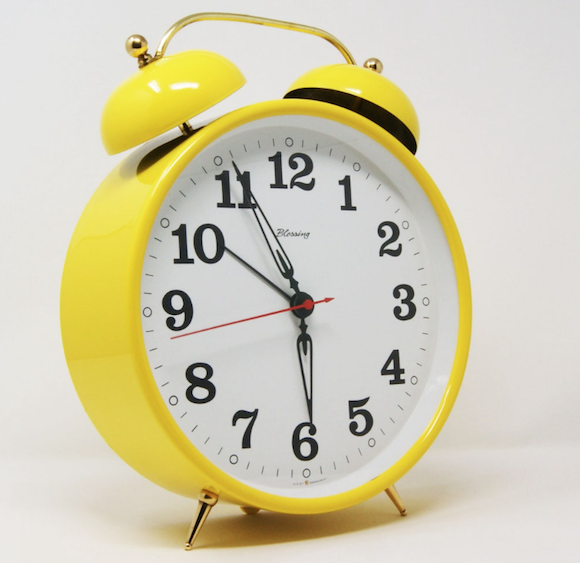
4) Remember self-care!
It’s no secret that I’m not a morning person, but it’s only been in the past few years that I’ve learned that our bodies need daylight in order to set our internal clocks to that we’re able to sleep at night. (This explains so much!) So, while there’s more daylight in the summer, it does you no good if you’re stuck inside your office or home and toiling away, missing it.
At work, your fellow staffers may take advantage of smoke breaks. (Ugh.) That’s paid break time of which you may never have availed yourself. So try it. No, don’t smoke (seriously, don’t), but take the break time and go outside. Here are some good moments to take a fresh-air-and-sunshine break:
- When you’ve come out of a meeting
- If you’ve just finished a virtual call on Zoom or Meet or Teams
- When you make three mistakes in a row. Everybody makes booboos, but if you mis-speak three times, or get confused about a concept, or just have a series of oopsies, that’s a sign that your brain is getting fuzzy and you need to refresh.
- If you’re angry, frustrated, hurt, or disappointed. There’s a reason the “Taking a stupid walk for my stupid mental health” TikTok trend has become so popular. It works!
- When you’ve just finished a chunk of deep work. Whether you’ve done a series of 25-minute pomodoros and are ready for a longer break, or you’ve tried the 52/17 Method and you’re ready for 17 minutes of sunlight, get the heck away from your desk. (More more on this, re-read Frogs, Tomatoes, and Bees: Time Techniques to Get Things Done.)
You also need sleep (aim for multiples of 90 minutes, so try 7 1/2 or 9 hours rather than your usual eight) to make sure you’re getting complete REM cycles.
Remember exercise. Whether it’s gentle yoga or power cardio, your body needs strong muscles, flexibility, and stamina.
Hydration and good nutrition are also essential. And no, this isn’t a wellness blog. But all of these things require good organization and management of your time. Set an alarm on your smartwatch or use an app to remind you to drink water.
5) Take a Technology Break, or a Few
Our dependence on technology can prevent us from noticing the real world all around us and the passage of time. I’m not saying to send letters by carrier pigeon instead of using email or scribbling numbers on the wall instead of using a spreadsheet. (Though it might be neat to receive a letter via the Owl Postal Service in the Harry Potter books!) But consider some options for reducing your dependence on tech when it’s not serving your productivity needs.
Keep the phone out of your bedroom. You’ll be less likely to doom scroll into the wee hours, and the blue light of your device won’t wreck your ability to fall and stay asleep.
When you do wake up, don’t grab your phone right away. Instead, do something intentional that will help you achieve your goals for making these hazy, crazy days of summer something more productive (or relaxing or dream-fulfilling). Why not:
- Meditate or explore silent devotion?
- Read a few pages of a real book?
- Visualize your goals for the day and embrace some positive affirmations?
- Get moving? Do some yoga stretches, go for a brisk walk, or do a short workout, or any tiny movement that won’t feel like labor but a nice blip of activity!
Start your day calmly and in control so you have a much better chance of achieving whatever it is you’d like to do with your summer.
When you’re working (or playing), keep your phone in your drawer or your bag. You’ll be distracted and interrupted far less often, allowing you to focus on what you’re doing and get into a flow state.
And maybe consider a digital detox where you put your gadgets and gizmos away after a certain time in the evening, or a technology sabbath where you eschew those pings and whooshes and curated feeds for 24 hours a week.
IDENTIFY WHAT YOU WANT TO ACCOMPLISH THIS SUMMER
Only you know what you want to achieve this summer. Once you’ve got an overarching goal, you can consider how you’ll implement it in small, manageable ways.
Write a book? If you do want to write a book, check out the sixth year of acclaimed author Jami Attenberg‘s 1000 Words of Summer. It provides accountability and motivation for getting a jump start on your writing. And maybe you could follow it up in November with NaNoWriMo?
Get in shape? Pick just one thing. If you’re intrinsically motivated, block time to swim in the morning before work instead of scrolling social media and hitting your snooze alarm, or after work to give your brain a complete refresh before having a “part 2” of your day. If you need external motivation and support, explore joining a summer workout program. Many cities and communities have outdoor sponsored by the Parks & Recreation departments for free or at minimal costs, and it’s less pressure (and cost) than joining a gym.
Maybe you don’t even know what you want to do this summer, but you just know you want this summer to be different and not whoosh by in a series of passing strangers on the street and saying, “Hot enough for you?” over and over. Peruse these posts for ideas:
102 Summer Goals That Are Perfect For Overthinkers
31 Best Summer Goals to Set This Season (2023)
45 Summer Goals: A List to Set for 2023
25 Summer Goals to Make the Most of the Season
Your summer plan doesn’t have to be a big thing. It doesn’t have to be a thing at all. Not everything has to be a big enough deal to make your family’s holiday newsletter. You could decide to eat more seasonal produce (rather than letting it turn to glop in the back of your fridge).

(I don’t know why this man needed so many bananas, but I applaud his enthusiasm!)
Maybe decide to set aside your spare change all summer and then donate it to charity…or splurge on something fabulous Labor Day weekend. (I won’t judge!) You could even strive to do some the things you missed out on during COVID, whether that’s seeing your favorite band on tour or traveling to a far-flung place.
Maybe you want to spend more time with your children to build memories, or have more quality time with your Significant Other or your BFF (not that your best friend isn’t also extremely significant)! Follow Laura Vanderkam’s suggestion and plot out big and little adventures for the summer weeks. By Labor Day, you’ll have stacked up a series of adventures that will make the summer memorable.
FIND A PARTNER
As I mentioned briefly in Paper Doll To the Rescue: How To Save Wet Books & Documents, a few summers ago, after a lifetime of trying (and failing) to read Anna Karenina, I partnered with my college friend and pre-COVID traveling buddy to read the book together. She’s a pediatrician in Upstate New York; I’m a Paper Doll in Tennessee. But through email and texts and phone calls, we were able to explore the characters and how we interpreted their behaviors through a modern lens. (Honestly, we gossiped about them as if they were Grey’s Anatomy characters. Just very, very Russian.)
We’ve decided to do it again, knowing we’re less likely to give up at a boring point if we’re doing this together. We agreed on reading another classic — we’re both fans of Jane Austen, but I already reread all six novels annually, and we wanted something new to both of us. I suggested Middlemarch, but she’s anti-George Eliot due to an unfortunate high school Silas Marner experience. She countered with Frankenstein, and while I appreciate Mary Shelley’s under-appreciated talents, I’ve read it before and it’s a downer.
Paper Doll on How to Celebrate Organizing and Productivity with Friends
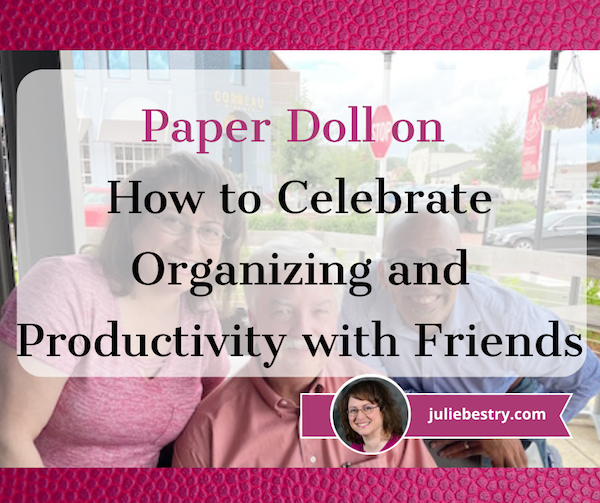
DO IT TODAY
Back in March, I told you all about my fabulous friend-of-the-blog (and of the blogger — me!), Kara Cutruzzula in Paper Doll Interviews Motivational Wordsmith Kara Cutruzzula. Writer/editor/playwright/lyricist/librettist & all-around-cool-kitten Kara and I have been collaborating for years and sharing one another’s achievements, and today is a chance to share something fun we’ve created together.
If you didn’t get the chance to read that post back, I recommend you jump over to do that. (There are some cool comedic and musical interludes!) We covered Kara’s talents at writing dialogue, especially spitfire-fast banter for whip-smart female characters like those in The Gilmore Girls and The Marvelous Mrs. Maisel, and her skills at writing musicals. That post dug deep into Kara’s background and the resources she creates, including her uplifting Brass Ring Daily newsletter, and her books:
Paper Doll Suggests What to Watch to Get More Organized and Productive

You may have heard that for the first time in 15 years, the Writers Guild of America has gone on strike. What they’re asking for is reasonable, especially in light of all that’s changed in the television industry (including streaming services). Meanwhile, you may find yourself with a shortage of your favorite shows to watch.
You’ve got lots of options to fill your time. You could read a book (or several), in which case, you might seek guidance from 12 Ways to Organize Your Life to Read More — Part 1 (When, Where, What, With Whom) and 12 Ways to Organize Your Life to Read More — Part 2 (Reading Lists, Challenges & Ice Cream Samples) Or you could get out in the sunshine or hang out with friends.
But what can you do if you really like to sit in a comfy chair and watch things on a glossy screen? Well, if you’ve already exhausted every English-language comedy and drama on Amazon Prime, Apple TV, Netflix, Hulu, Paramount+, Disney+, and YaddaYadda+, you could try watching one of the many Korean-language dramas on Netflix. (I recommend Extraordinary Attorney Woo — it’s charming and delightful.)
Or you could try something completely different. Today’s post offers up a mix of webinars and actual TV programming designed to help you live a better, more productive, more organized life.
DAILY DOSE MINI CHALLENGES
Could you use a little support in reaching your goals? My cool friend Georgia Homsany runs Daily Dose, a wellness company celebrating its 3-year anniversary! How do you celebrate three years of supporting people’s health and wellness needs through corporate and individual endeavors? With three really cool weeks of 5-day mini-challenges! And I get to be part of one of them!
- 5-Day Positivity Challenge (May 8-12) — Learn how to conquer stress and negativity with simple reminders and healthy habits to transform your mindset. (It starts today!)
- How to Overcome Perfectionism (May 15-19) — Learn how recognize the signs of perfectionist tendencies, understand the negative effects of it, and gain skills to minimize the idea of perfection in your workplace and personal life.
- Declutter Your Space and Schedule (May 22-26) — Receive actionable advice to help you get motivated, make progress, and gain control over the life and work clutter that weighs you down. From chaotic mornings to cluttered desks and screens to procrastination and wonky schedules, I’ll be telling you how to make it all better.
Yup, that last one is my mini-challenge. And you KNOW how much I pack into whatever I deliver.
For each mini-challenge, you get:
- Video content delivered daily over the course of five days. Videos are designed to be short and to the point so you can learn and get on with your day to incorporate the advice.
- Email and/or text reminder notifications — and you get to set your reminder preference!
- An interactive platform to ask questions and chat with other participants.
Plus, there’s a BONUS: Each participant will also be entered in a raffle to win one of three wellness prizes! (One (1) winner per challenge.)
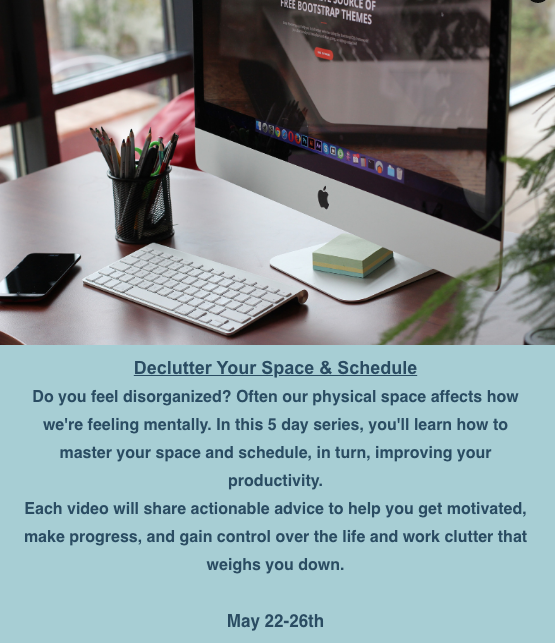
The cost is $25 per challenge, or $65 for all three! (And remember, the first challenge starts today, Monday, May 8th!) So go ahead and register before it falls to the bottom of your to-do list!
Declutter Your Space and Schedule
If you have questions or want to sign register for all three, email Daily Dose with “5 Day Mini Courses” in the subject line. And say hi from me!
HOW TO FIX MEETINGS
Graham Allcott of Think Productive is the author of How to be a Productivity Ninja: Worry Less, Achieve More and Love What You Do, which has a prominent place on my bookshelf.







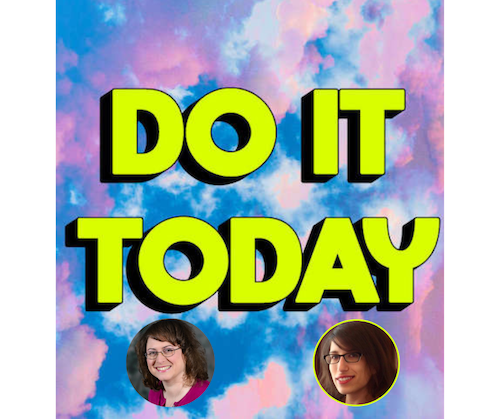

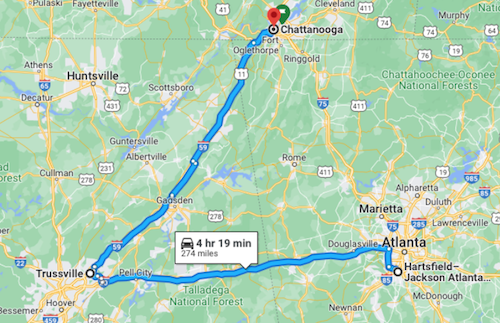
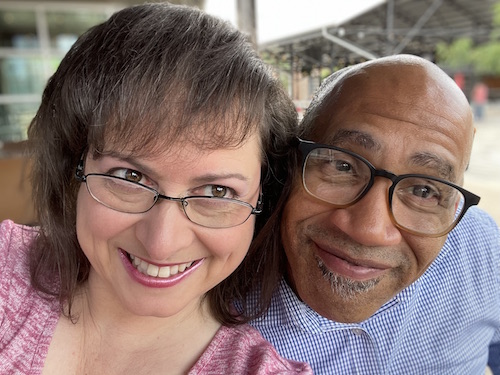
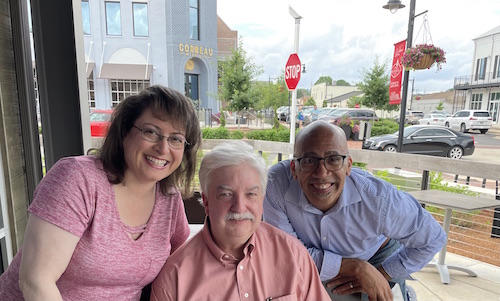
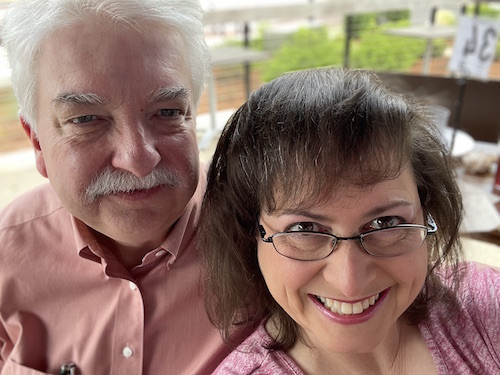
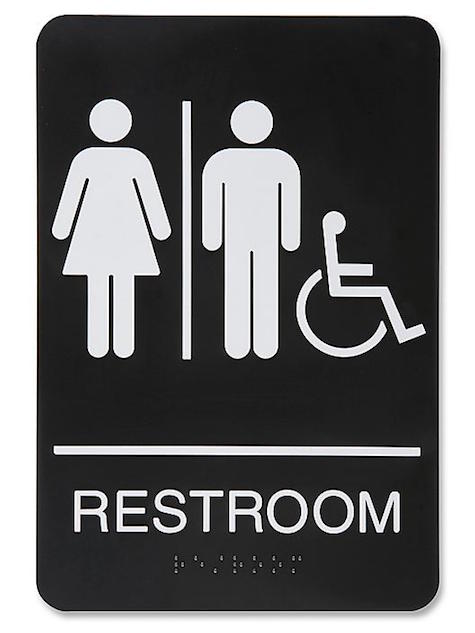 At
At 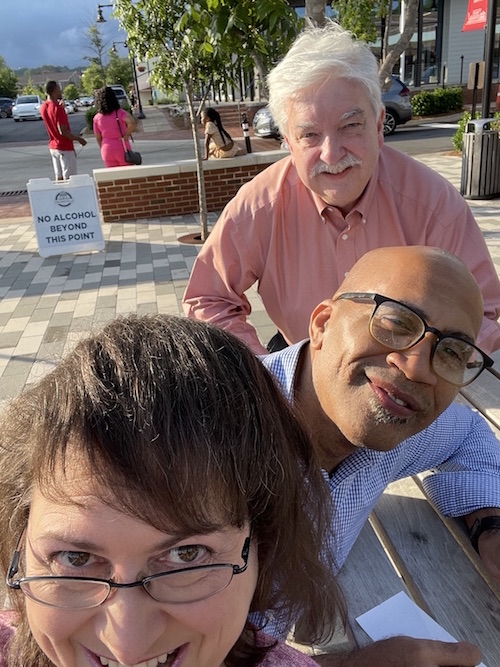







Follow Me